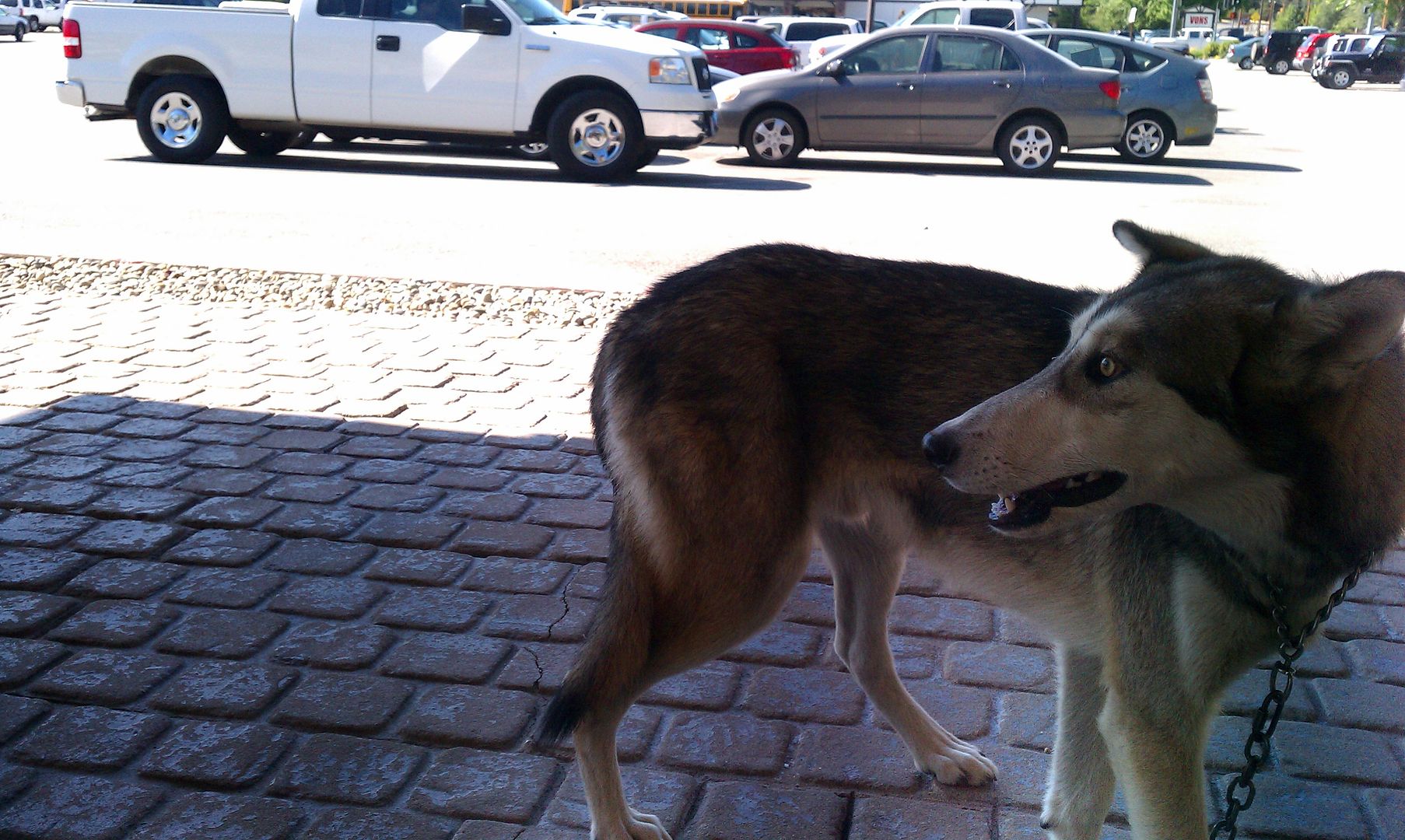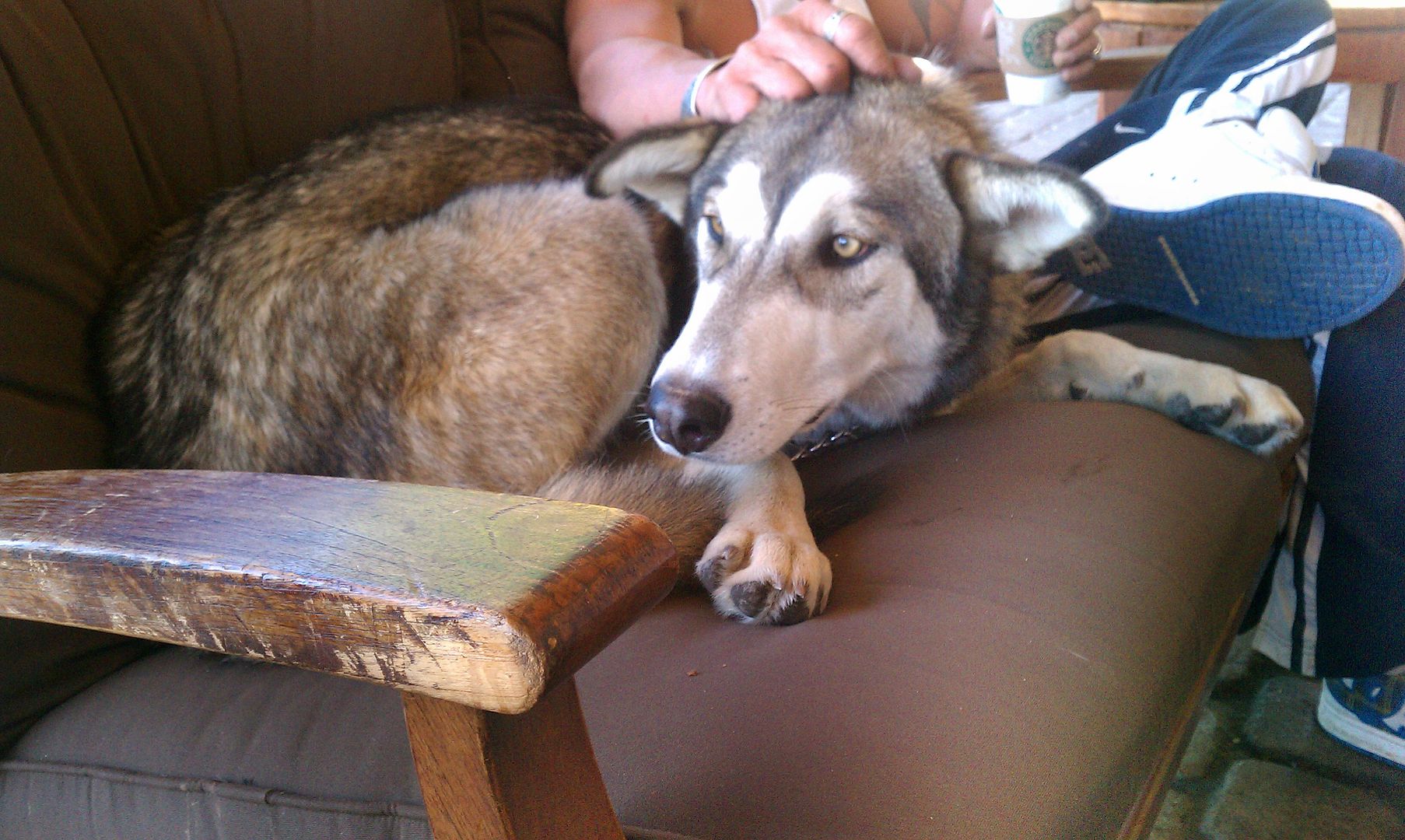
Lately I’ve been out in public more than I have been in some time.
If you are a subscriber, you know that I am getting ready to start seeing clients again after being unavailable for the past few years.
I have to say that being incognito has been interesting, to say the least.
Earlier this week I happened to be at my mobile office location–a popular gathering place for conversation, coffee and people watching.
Now, as you might expect, I spend more time dog watching.
Over the years in my profession I’ve noticed that most behavior problems stem from the miscommunication between the pet owner and their pet(s) and the failure of people to really see their animal and its behavior clearly.
So I have to ask, how are your animal observation skills?
Because my work is all about communication and creating an animal connection, I am constantly stunned at what people miss or fail to think about.
This particular thought process was triggered by the arrival of a man with his dog and the resulting activities in the public environment.
First off, he arrived with a dog who was outfitted in a pinch collar and on a chain. This was a red flag to me even though I caught his arrival through my peripheral vision.
My spider sense was activated and so I observed as he approached.
Through my work over time, I tend to insert people into specific categories when it comes to animal sense and patterns of behavior.
This guy fit into the one where the attraction of getting an animal was more for the status (or allure) of what owning the particular breed might project.
Although you cannot conclusively identify a wolf-dog mix visually (see my series on wolf dog hybrids), he did boast that this animal was a wolf (although a true wolf would require specific licensing as it is illegal to have them otherwise) and chatted to others about this.

As for the critter, he was fearful, still young and still unaltered. This man was oblivious to his animal’s discomfort as he left the dog unattended and chained outside as he entered the coffee house to order.
I’m not saying that he didn’t care about the beast but as an observer, I had to wonder why he would put his animal into a situation where the stress level created such a high level of discomfort.
In the midst of the environment, there luckily was a friendly adolescent dog nearby. This canine clan member served as a reassuring presence despite the fact that the insecure male dog was also fearful of it.
In the hour or so that I observed this animal, people ignored his signs of distress as they imposed themselves upon him or attempted to invade his space.
The animal consistently moved away from everyone who approached, panted heavily, tucked his tail between his legs, and cowered consistently as people remained oblivious to what he was telegraphing.
It wasn’t until he finally was able to nestle in near his owner that he settled down.

As for the owner, he never paid much attention to the animal but occasionally rubbed his neck if the animal inserted himself between the table and chair in an effort to escape yet another human breaching his personal space. His pet finally climbed up to get next to him and only then began to relax.
One of the people in the public area was a wolf dog owner with whom I consulted with sometime back. As we were departing, she expressed her surprise that I didn’t insert myself into an interaction with the man or the animal.
This got me to thinking about it. Why would she assume I would get involved?
She did know that I frown on any wild animal pets or those bred with a domestic animal–perhaps that triggered the comment.
As a professional, I tend to reserve my expertise for my clients and select public education efforts.
Some people get involved in matters such as these.
So, I wonder what you think about the choices this pet owner made in bringing his animal to the public area where the creature was clearly stressed.
How would you have acted if you were sitting nearby? Would you have noticed the animal’s distress? Would you have engaged the owner or have tried to interact with the dog?
Leave your comments below or, if they are closed, take a moment over to my Facebook community.


Now this is just me: First I would have let the dog smell my hand to make friends with him then if I could I would pet him until his owner came back out. The third thing I would do is ask the owner what breed he was?(like I didn’t know) And when he would tell me I would just casually tell him about pack animals and there need to be excepted by a pack. Then I would tell him about the relationship I have with mine. I would also tell him how dangerous it is for the animal to have a pinch collar a harness is the best.
I know from having Malamutes, Huskies and hybreeds they are some of the sweetest and smartest animals you can have but you have to have a large enough area to roam around. We have 15 acres in the woods. So they still can have their wild instincts and I am apart of their pack. For people that want one of these animals for status have no feelings for the animal, and should not have an animal. I am such an animal lover (matter of fact I rather be with the animals over humans any day.) I would have been nice to the man at first and when he showed no interest in the dog I would tell him to give him to me where he can be happy for the rest of his life.
Hi Janet, thanks for taking some time to share your thoughts about this situation. You obviously spent some time responding and I appreciate it but let me clarify a few things.
Letting an animal smell your hand isn’t a good approach and I’m not sure where that trend came from. It is best to let the animal approach you and sniff. Both these options did not exist because this animal was too fearful and wanted nothing to do with any humans. He did accept me and got close but I didn’t make any overtures and he had no interest in any connections.
The dog owner was telling everyone his dog was a wolf. This was unlikely, based on this belief, he was also unlikely to be open to any education about it. Ie., permit requirements, etc. What would compel you to try to educate this person?
As far as the pack idea, dogs are social animals but a pack reference for domesticated dogs as it relates to dominance can be misleading and confusing.
I am going to write a bit more about this but can read more about this from: http://www.avsabonline.org/avsabonline/images/stories/Position_Statements/dominance%20statement.pdf